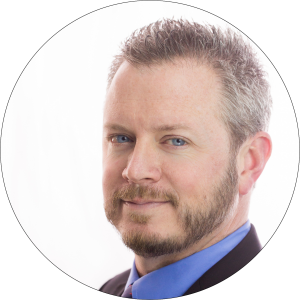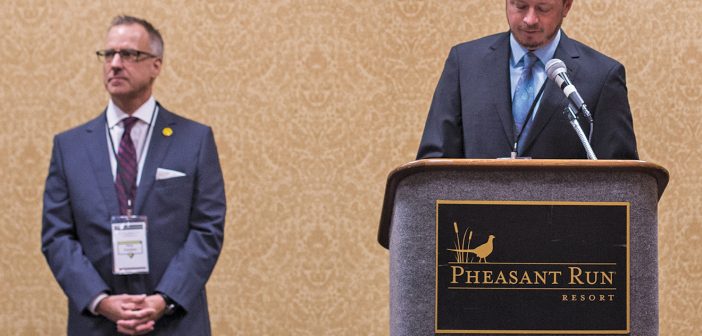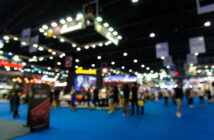Working Hard
Fair Play Pledge and Other News Emerge from Successful Annual Meeting
Q: How was the Annual Meeting and Gala? It looked like a pretty newsy affair!

Chris Felix
A: The meeting went very well and you’re right, there was a good bit of news coming out of it.
First, I’m happy to announce we have two new members on our board of directors. We welcomed Alpha-Omega Sales’ Joe Camarota and Benchmark’s Al Kress. We also have Coast to Coast Entertainment’s Jim Chapman as a first alternate and Jonathan Durst of Pyramid Technologies as second alternate.
One of the things we’re most excited about is the rebirth of the Fair Play Pledge, a commitment by our industry to build redemption games in which the player has a fair chance at winning while remaining fun, challenging and something our industry’s operators can make money with.
The concept isn’t new to AAMA. It’s something that was attempted before I came on board, and we did some work on it about three years ago. Back then, we ran into roadblocks and there just wasn’t enough support from manufacturers and distributors to get the hard work done. Here we are three years later with news reports and stories online about crane machines, and we realize we need to put some guidelines around it. We’d rather get ahead of it instead of playing catch up.
So during our annual event, we had a Fair Play Pledge meeting with representatives from the manufacturers who make redemption pieces, as well as the distributor members of the association. (We didn’t invite manufacturers of jukeboxes because this doesn’t apply to them and doesn’t impact their businesses.) It was a full room and we had a great amount of participation –– all of these manufacturers attended. The gist of the whole thing is that we want to put together something that shows the association is genuinely concerned that players have a fair shot at winning prizes and that we are operating in a fair manner towards the consumers.
The reason we got that group together is that we talked within the organization about putting something together that outlined “What is fair play?” and as an association, how do we support it. We came to the conclusion that if we didn’t have buy in from the manufacturers, we’d never get anywhere. Since we were going to have all the manufacturers at the annual meeting, it made perfect sense to squeeze it into this year’s schedule.
The idea was to get everyone in the room, listen to their ideas, get their feedback, and also walk out of there with some buy in from the manufacturer members that this was something that they wanted us to do.
I was very happy to see that we had 100 percent consensus in the room going forward that yes, this was what manufacturers wanted.
As we talked through it, we realized that there are certainly challenges to this process. It won’t be an easy thing to define or create, but to know that all the manufacturers recognize that we do need to have something in place and that it is important that the player has a fair opportunity to win a prize. The challenge to it is how do you define “skill.”
Coming out of the meeting, we recognize that we need to also work with our partners at the AMOA to help create these guidelines. While manufacturers can create a machine that falls within these guidelines, we need the support and participation of the operating community as well.
So we had buy in from the manufacturers and that certainly is key. As we talk, we’re also preparing for a follow up meeting Oct. 19 at the Betson facility in Carlstadt, N.J. We’ll have a number of people from the meeting in Chicago to further define what this looks like on paper. The goal is to walk out of that meeting with some actionable items and a real framework for the program.
The easiest way to define it, though we haven’t been able to put it in other words yet, is to think about a basketball hoop. You can change the size and shape of the hoop, but the basketball should always be able to fit through the hoop. Now, that hoop might be just slightly larger in diameter than the basketball, but it can always still pass through the hoop. That’s the easy, visual definition of what we’re trying to do. The much harder part is to define it in ways that will work for both the manufacturers and operators.
We don’t have a timeline for completion of the Fair Play Pledge, but we have certainly picked up momentum. As we talk, our annual meeting was just two weeks ago and already we have a follow up meeting set for a month later.
Also at the annual meeting, we had a well-received presentation by our Member Benefits Group about the new Member Benefits Program. (This allows companies to save money on items and services they already use.) Rich Babich shared his personal experience, which really brought home the value of the program. He was able to save a considerable amount of money on his shipping costs through UPS and FedEx. Looking at what he was paying, he’s going to save about $1,000 a year, which already covers his membership in AAMA.
Use of the program is still low within the group, but we only officially launched it just a bit before the annual meeting. This is really the first time we’ve really been able to get the members together to talk about it. There was definitely some interest. The representatives showed how easy it really is to sign up and use, and that it really is as good as it sounds. I’m sure we’re going to see participation increase going forward.
Overall, attendance at this year’s meeting was up about 20 percent and we even had new FEC members signing up at the event. There are a number of reasons why that’s happening but one is that new Executive VP Pete Gustafson has made it his goal to help us grow membership in the FEC community. During his time at Sega, Pete was selling quite a bit of equipment to that part of the industry, building numerous relationships along the way. One of his “go gets” when he came on board was to talk to those FECs and encourage them to join AAMA. We’re seeing the FEC community definitely more interested in AAMA and becoming part of our association.
Dave and Buster’s Kevin Bachus gave a presentation at the meeting that was easily the best-attended session we had. A lot of FEC people were interested to hear what he had to say. He talked about the growth of their business and also about his feeling that manufacturers need to work more closely with the FECs to build games that work in their environment. There is a willingness at D&B to have a tighter relationship with manufacturers on new machine development to create products that would help improve the player experience at major FEC chains.
I continue to be amazed at the wealth of information the major FEC chains will share with each other. Dave and Buster’s is a public company so all the numbers Kevin presented is information I could have dug up on my own. But he presented store growth, financials, some of the things they’re doing to try to draw more people and get more families to come into their stores. Whenever I sit in the room with the key FEC people, the amount of information that they’re willing to share between each other catches me off guard all the time.
A comment caught me by surprise while we were talking about the Member Benefit Program. One of the FEC members said that he was able to save money on something as small as sanitary gloves you’d use in a kitchen. His point was, “Don’t underestimate what you can save on some of the smaller stuff even if you’ve never thought of it before.” He suggested that you look at those items within the buyer’s program and see if there’s an opportunity to save money. That’s something that could have been thought of as a competitive advantage and he could have kept that bit of information to himself. Instead, he shared it with the room, from one business to another. That’s really unusual to do, but it’s very commonplace in the FEC market. They want to share with others – including competitors – to benefit the industry as a whole. Their mindset is so positive and energetic and they truly do see growth opportunities.
Our Kids Play the final morning went great with much larger participation from KEEN (Kids Need Exercise Now). Our intention is to continue doing this, but for next year, we hope to have greater manufacturer attendance. We want to encourage the manufacturer reps to not only keep their machines set up for play, but to stay themselves and interact with the kids. That’s something we’ll work on for next year. We’re also going to review the venue for next year.
Finally, we’re busy preparing for IAAPA. The Attractions Expo is one of the events on AAMA’s Location Trade Show calendar and we’ll have a 60-booth pavilion there that’s already sold out. AAMA will also have its own booth on the show floor where we’ll continue to drive for FEC memberships, especially trying to get some of the medium-sized FECs interested in joining, and pushing our buyer’s program.
I want to remind people to be sure to reserve their hotel rooms early in the Sheraton Dallas Hotel for the Amusement Expo. They can do this online at the Amusement Expo website (www.amusementexpo.org). By the time your readers get this issue, registration and exhibit sales should be open online, too.
Chris Felix, National OEM Sales Manager for MEI Conlux/CPI (Crane Payment Innovations), worked for MEI prior to its acquisition by Crane. Felix, who was elected to his two-year term at the AAMA Annual Meeting and Gala in August, has been honored with the group’s President’s and Joe Robbins awards. A U.S. Navy veteran, he served as a Nuclear Reactor Operator aboard the USS Minneapolis St. Paul and the USS Greeneville submarines. When he’s not busy with work or association duties and travel, you might find Chris out training for a marathon.




